Part Three in the Great Traditions of Chinese Cuisine series
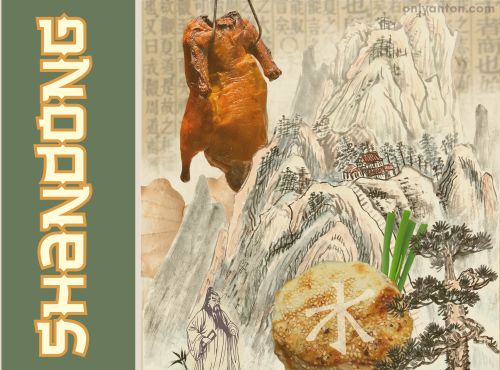
Introduction
Shandong food emerges as the Great Tradition of Lu Cuisine in the land of Confucius, where philosophy and gastronomy intertwine. With a history spanning over 2,000 years, it is one of China’s oldest and most influential culinary traditions. This northern Chinese cuisine has shaped imperial banquets and exemplified the essence of balance, purity, and respect for nature’s bounty. Today, the flavours of Lu cuisine continue to inspire and delight, offering a taste of China’s rich cultural heritage.
Located along the Yellow River and bordering the coast, Shandong province enjoys fertile plains, a temperate climate, and abundant seafood. This geographic richness plays a pivotal role in shaping the cuisine’s emphasis on fresh ingredients and aromatic flavours. From its light, crisp seafood dishes to its hearty wheat-based staples, Lu cuisine reflects this historic region’s agricultural and maritime bounty.
This post continues the exploration of Chinese culinary traditions, which began in “The Eight Great Tastes of Chinese Cuisine,” the introductory post “Chinese Cuisine: The Eight Great Traditions,” and “Sichuan Food: The Great Tradition of Chuan Cuisine.” In this installment, we’ll delve into the key flavours, ingredients, signature dishes, and cooking techniques that define Shandong cuisine and its enduring impact on Chinese culinary history.
Shandong’s Geographical and Cultural Context
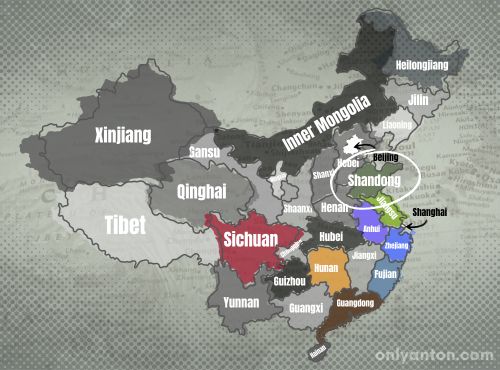
Location and Geography
Shandong province is often called the “Land of Abundance.” The region is located along the northern coast of China, bordered by the Yellow Sea to the east and the Yellow River to the west. Its temperate climate, fertile plains, and abundant coastal waters make it one of China’s most agriculturally and economically important regions. This geographic bounty allows Shandong to produce a variety of high-quality ingredients, from fresh seafood to grains, which form the backbone of its celebrated cuisine.

Cultural Significance
Shandong is the birthplace of Confucius, whose teachings have profoundly influenced Chinese thought, tradition, and gastronomy. The meticulous preparation and presentation of Shandong dishes reflect the Confucian ideals of balance, harmony, and respect for ritual. The region’s historical role as a center of Confucianism has elevated its cuisine, ensuring it plays a central role in ceremonial banquets and imperial kitchens alike. This deep cultural heritage imbues Shandong cuisine with a sense of refinement and philosophical depth that sets it apart.
Key Flavours and Ingredients
Flavour Profile
The essence of Shandong cuisine lies in its commitment to freshness and bold flavours. The natural characteristics of its ingredients shine while delivering a satisfying depth. This approach to flavour is especially evident in its seafood and vegetable dishes. Light seasoning enhances rather than overpowers the ingredients.
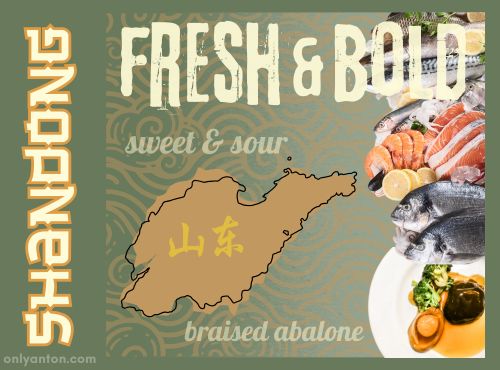
The coastal location of Shandong heavily influences its culinary identity. The province is well-known for its fresh seafood, including yellow croaker, sea cucumber, and prawns, often prepared with light seasoning to highlight their natural flavours. Whether it’s the tender sweetness of a freshly steamed yellow croaker or the crisp bite of stir-fried seasonal greens, Lu cuisine celebrates nature’s bounty, prepared with precision and respect.
Aromatic Seasonings
Boldness in Shandong cuisine emerges through its masterful use of aromatic seasonings. Layers of flavour are added without overshadowing the main ingredients. Green onions, ginger, and garlic are the most common flavour enhancers. Chefs use these ingredients sparingly to balance and elevate the natural essence of dishes. These aromatics create a robust and fragrant foundation for signature dishes, offering a bold contrast to the subtle flavours of fresh seafood and vegetables. For instance, ginger paired with fish counteracts brininess with a spicy warmth, while garlic enriches the savouriness of braised meats.
Staple Foods
Wheat-based staples, another hallmark of Shandong cuisine, also reflect the region’s culinary identity. Grains such as wheat and millet thrive in Shandong’s fertile plains, leading to the prominence of wheat-based products. In contrast to southern China, where rice dominates, Shandong favours hearty dishes like noodles, dumplings, and steamed buns. One iconic example is plump boiled dumplings (水饺, shuǐjiǎo), often filled with pork and cabbage. Another example is the crispy, sesame-studded flatbread known as shaobing (烧饼). These dishes are full of texture and flavour and showcase wheat’s versatility. They also embody Lu cuisine’s boldness and ingenuity, which thrives on simplicity and technique.
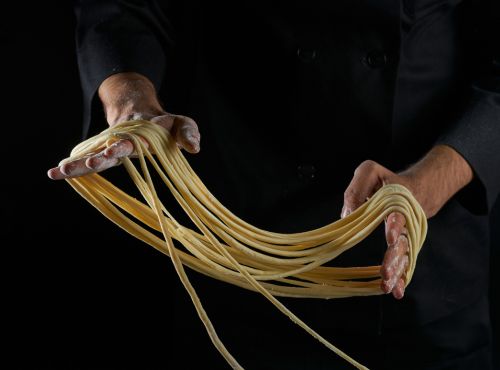
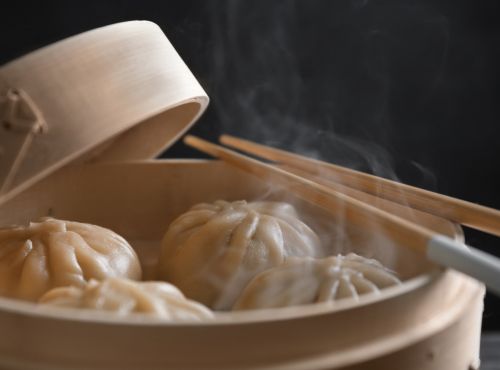
By combining freshness with bold flavours, Shandong cuisine offers a harmonious blend that reflects the region’s agricultural abundance and culinary artistry. Each dish embodies a unique interplay of subtlety and strength, making Lu cuisine a standout tradition in Chinese gastronomy.
Signature Dishes of Shandong
Shandong food emphasizes balance, purity, and refined techniques. The cuisine offers a wide array of dishes that reflect its culinary heritage. From luxurious banquet fare to hearty, everyday staples, these signature dishes showcase the depth and versatility of Lu cuisine.

Braised Sea Cucumber (红烧海参)
A symbol of luxury and refinement, braised sea cucumber is a dish often reserved for banquets and special occasions. The sea cucumber, known for its soft yet slightly chewy texture, is slow-cooked in a savoury, soy-based sauce infused with ginger, garlic, and green onions. This dish epitomizes Shandong cuisine’s ability to elevate simple ingredients into something extraordinary, emphasizing richness and umami.
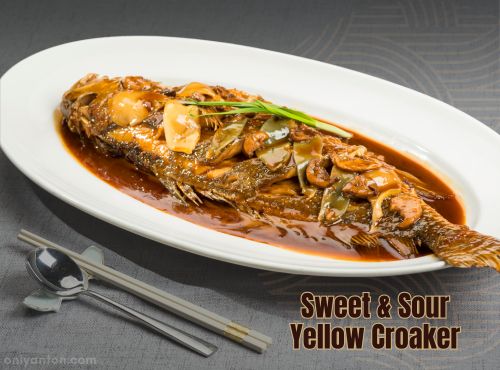
Sweet and Sour Yellow Croaker (糖醋黄鱼)
This classic Shandong dish highlights the region’s coastal abundance and culinary precision. Fresh yellow croaker is lightly battered and fried to golden perfection. The fish is then coated in a tangy sweet-and-sour sauce that balances the fish’s natural sweetness with a zesty kick. The vibrant flavours and tender texture make it a standout example of Shandong’s approach to seafood.
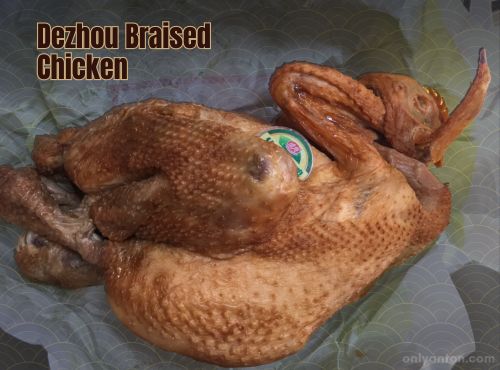
Dezhou Braised Chicken (德州扒鸡)
Originating from the city of Dezhou, this famous dish features a whole chicken braised in a fragrant blend of soy sauce, star anise, cinnamon, and other aromatic spices. The result is incredibly tender, flavourful meat that falls off the bone. With its slightly sweet and savoury profile, Dezhou Braised Chicken has become a beloved staple of Shandong’s culinary repertoire.
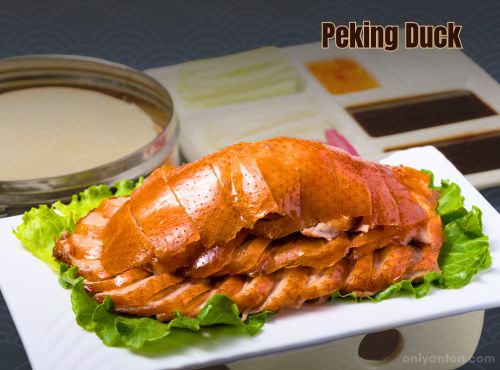
Peking Duck (北京烤鸭)
Although synonymous with Beijing, Peking Duck traces its origins to Shandong, where chefs first developed advanced roasting techniques. The dish is famous for its paper-thin, crispy skin and succulent meat, served with thin pancakes, hoisin sauce, and scallions. Dining on Peking Duck is a sensory experience I discovered with my mother at Bianyifang, one of Beijing’s oldest Peking Duck establishments near the Temple of Heaven. The artistry of its preparation and its connection to both Shandong and Beijing culinary traditions make it a shining example of northern Chinese cuisine.
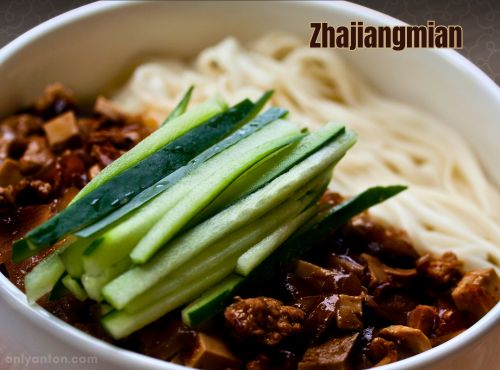
Fried Sauce Noodles (Zhajiangmian, 炸酱面)
Another dish often associated with Beijing is zhajiangmian, which has deep roots in Shandong’s wheat-based culinary tradition. A hearty, savoury sauce made from fermented soybean paste, minced pork, and aromatics like garlic and ginger smothers thick wheat noodles. This noodle dish, served with fresh julienned vegetables like cucumber and radish, exemplifies the overlap between Shandong and Beijing cuisines. My own experience enjoying zhajiangmian near the Forbidden City, accompanied by my mother and a former student’s family, underscores its communal and cultural significance.
From its luxurious banquet dishes to its comforting everyday staples, Shandong cuisine continues to delight palates while offering a glimpse into China’s culinary and cultural history.
Shandong Cooking Techniques
Shandong cuisine’s distinctive flavours and textures are brought to life through various traditional cooking techniques that emphasize precision and simplicity. These methods showcase the natural qualities of the ingredients while enhancing their depth and richness.

Quick Frying and Stir-Frying
Quick, high-heat cooking methods like frying and stir-frying are staples in Shandong cuisine. These techniques allow chefs to preserve the ingredients’ fresh, natural flavours and textures while infusing them with aromatic seasonings. For instance, stir-fried seafood and vegetables often feature a subtle interplay of garlic, ginger, and green onions, ensuring that the main ingredients remain the star of the dish.
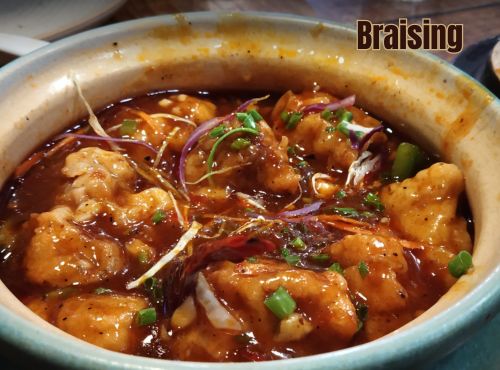
Braising
Braising is a cornerstone technique in Shandong cuisine, celebrated for its ability to create rich, intensely flavoured dishes. Chefs cook ingredients slowly in a flavourful broth or sauce, often with soy sauce, sugar, and aromatic spices like star anise and cinnamon. Dishes like braised sea cucumber and braised pork showcase this technique, offering tender textures and bold, harmonious flavours perfect for banquets and special occasions.
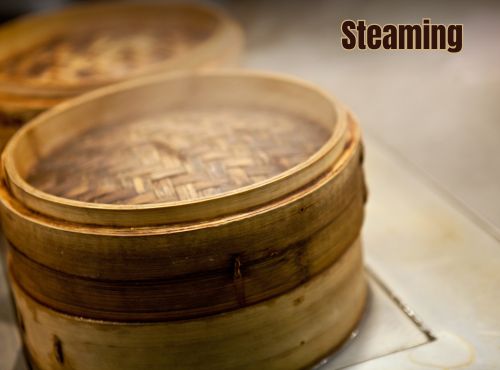
Steaming
Steaming is another essential cooking method in Shandong cuisine, particularly for seafood and dumplings. This technique preserves the purity and natural taste of the ingredients, ensuring that their delicate flavours remain intact. For example, steamed fish is often lightly seasoned with ginger and green onions. At the same time, dumplings are filled with fresh, savoury ingredients like pork and cabbage, allowing their simplicity and freshness to shine.
Shandong cuisine perfectly balances flavour, texture, and presentation through these time-honoured techniques, reflecting the region’s dedication to culinary artistry and tradition.
Shandong’s Culinary Influence and Historical Importance
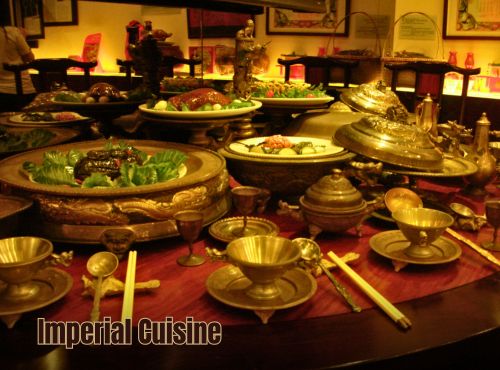
Imperial Cuisine
Shandong cuisine has played a pivotal role in shaping the culinary traditions of China, particularly through its influence on imperial cuisine. During the Qing Dynasty, Shandong’s emphasis on freshness, purity, and precise techniques became the standard for the imperial kitchens. The region’s meticulous cooking methods and high-quality ingredients were highly regarded. As a result, Shandong cuisine set the benchmark for refined dining in the royal court.
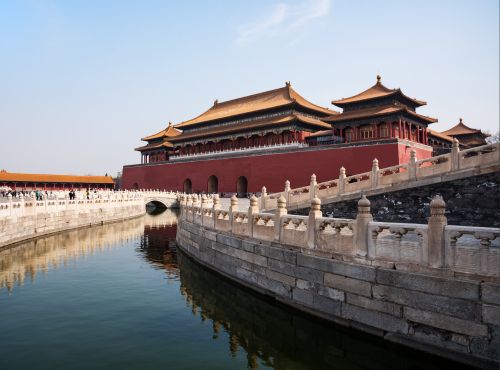
Beijing and Tianjin
Beyond the imperial influence, Shandong’s culinary techniques and flavours have left an indelible mark on northern Chinese cooking, particularly in Beijing and Tianjin. Dishes such as Peking Duck and zhajiangmian, while now more commonly associated with Beijing, are rooted in Shandong’s tradition of wheat-based staples and roasted meats. The region’s use of aromatic seasonings and hearty flavours continues to shape the food culture of northern China, reinforcing Shandong’s legacy as a culinary trailblazer.
Modern Influence
Modern interest in Lu cuisine in China and abroad has been resurgent. High-end restaurants now highlight traditional Shandong dishes, celebrating the cuisine’s history and flavours with contemporary flair.
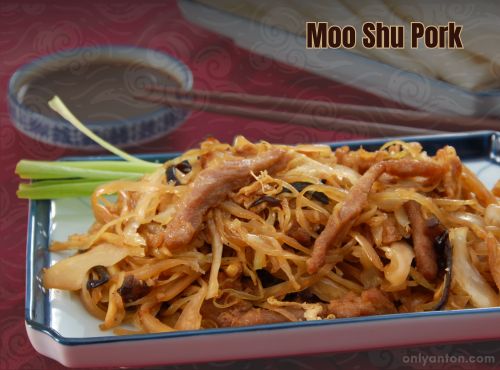
One example of Shandong’s enduring influence is Moo Shu Pork (木顺肉), a dish popular in American-Chinese cuisine. This stir-fry of pork tenderloin, cucumbers, scrambled eggs, and mushrooms, seasoned with ginger, garlic, and soy sauce, reflects Shandong’s mastery of aromatic and balanced flavours. Served with rice or thin pancakes, Moo Shu Pork showcases the adaptability and timeless appeal of Shandong culinary traditions. Shandong cuisine’s legacy as a foundation of Chinese culinary heritage is a testament to its innovation, cultural significance, and enduring relevance in kitchens worldwide.
Conclusion
Shandong food, or Lu cuisine, is one of China’s most influential culinary traditions. Its focus on fresh ingredients, aromatic flavours, and rich braised dishes reflects the region’s agricultural abundance and culinary precision. From iconic dishes like braised sea cucumber and Peking Duck to the hearty comfort of fried sauce noodles, Shandong cuisine embodies a unique blend of refinement and heartiness. Its impact on imperial kitchens, northern Chinese cuisine, and modern dining trends underscores its enduring significance in China’s culinary heritage.
The next post in this series will turn to Yue cuisine, better known as Cantonese food. Renowned for its delicate flavours and global influence, Cantonese cuisine offers a fascinating contrast to the robust dishes of Shandong. Stay tuned as we explore the subtleties and innovations of the Great Tradition of Yue Cuisine.
What About You?
Have you ever tried Shandong food? What are your favourite dishes from this region, or which ones are you most curious to try? Share your experiences in the comments below. I’d love to hear from you!
If you enjoyed this post, explore my previous articles in the Great Traditions of Chinese Cuisine series, “Chinese Cuisine: The Eight Great Traditions” and “Sichuan Food: The Great Tradition of Chuan Cuisine.” Let’s continue the journey through China’s rich culinary heritage together!
Further Reading and Resources
Related Posts on Only Anton
- Chinese Cuisine: The Eight Great Traditions: Explore the Eight Great Traditions of Chinese Cuisine, from Anhui to Zhejiang, and discover China’s regional culinary heritage.
- Sichuan Food: The Great Tradition of Chuan Cuisine: Discover the bold flavours and spicy ma la sensations of Sichuan cuisine, from Mapo Tofu to Hotpot. A must-read for food lovers!
- The Eight Great Tastes of Chinese Cuisine: A look at the primary flavours that underpin the Eight Great Traditions.
- Sichuan Cuisine: A Culinary Odyssey in Chengdu: Dive into the flavours and techniques that make Sichuan food so distinctive.
External Resources
Books
- The Food of China by E.N. Anderson (1990): A detailed exploration of the history, culture, and regional diversity of Chinese cuisine, including insights into Shandong cuisine. Find it at the library, explore online sources, or get a copy here.
- All Under Heaven: Recipes from the 35 Cuisines of China by Carolyn Phillips (2016): This comprehensive cookbook offers a range of recipes and cultural notes on Shandong cuisine and its key dishes. Discover it at your library, look it up online, or purchase your copy here.
- On the Noodle Road: From Beijing to Rome with Love and Pasta by Jen Lin-Liu (2014): A travelogue and culinary exploration that touches on the history and evolution of wheat-based dishes in northern China, including Shandong. Find it at your library, browse online, or grab your copy here.
Websites and Articles
- Taste Atlas – Shandong Cuisine: An overview of articles about Shandong’s signature dishes, cooking techniques, and flavours.
- “Top 6 Shandong Foods,” Taste Atlas (December 2024): Highlights six must-try dishes from Shandong cuisine, showcasing the region’s rich culinary heritage and iconic flavours. Find the article here.
- “Shandong (Lu) Cuisine—The Ancient Mother of the Northern Cuisine Styles,” China Highlights: Explores the history, key flavours, and culinary techniques of Shandong cuisine, emphasizing its influence on other northern Chinese food traditions. Read the article here.




